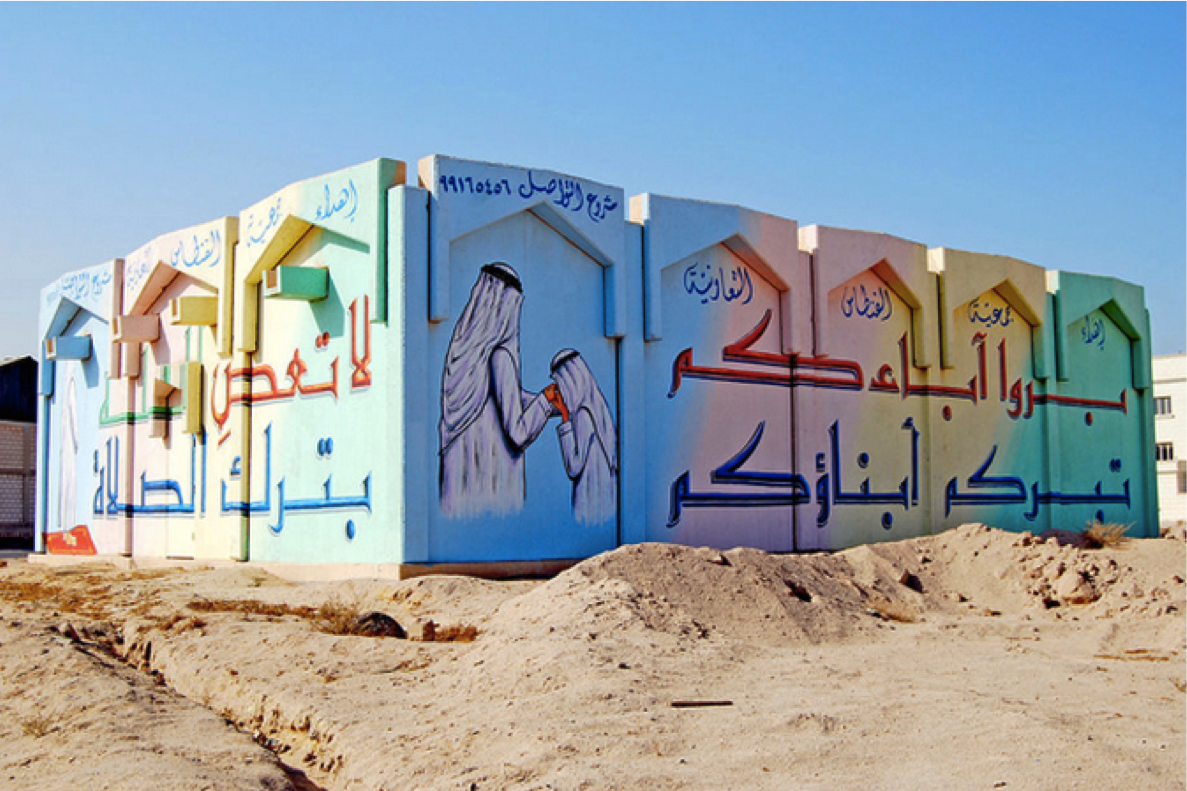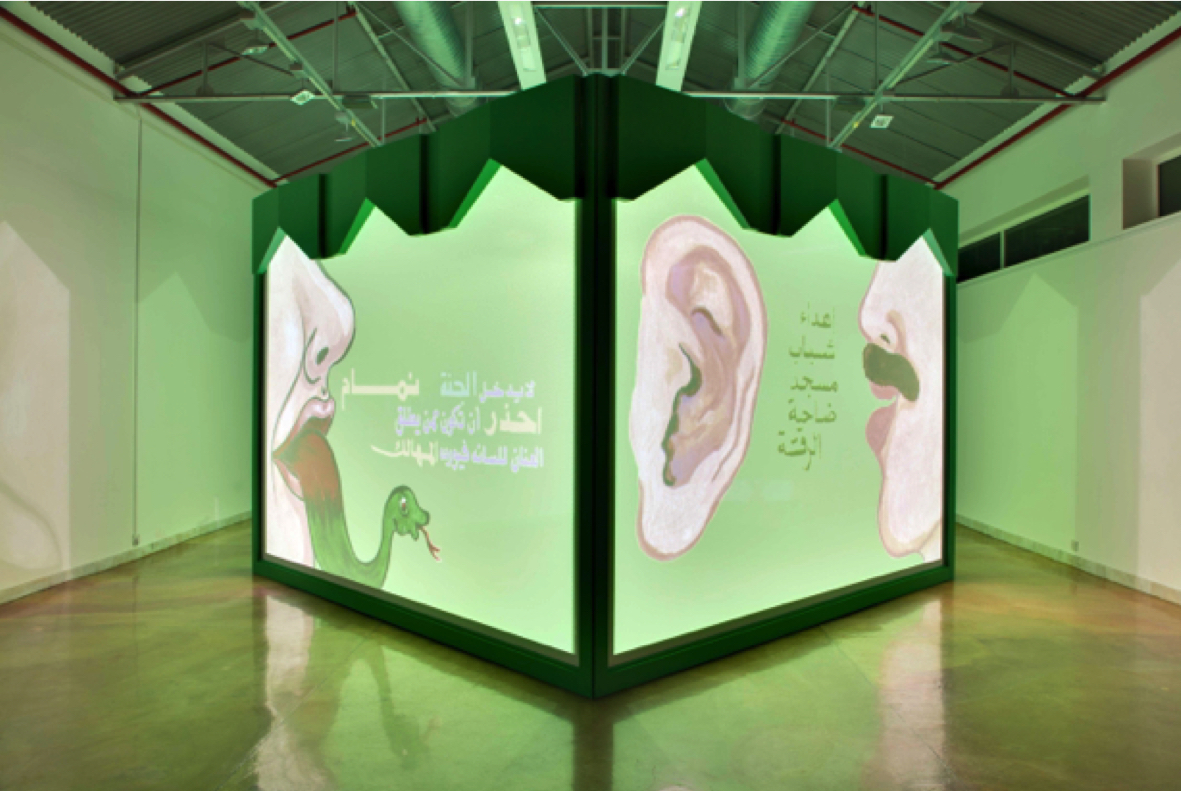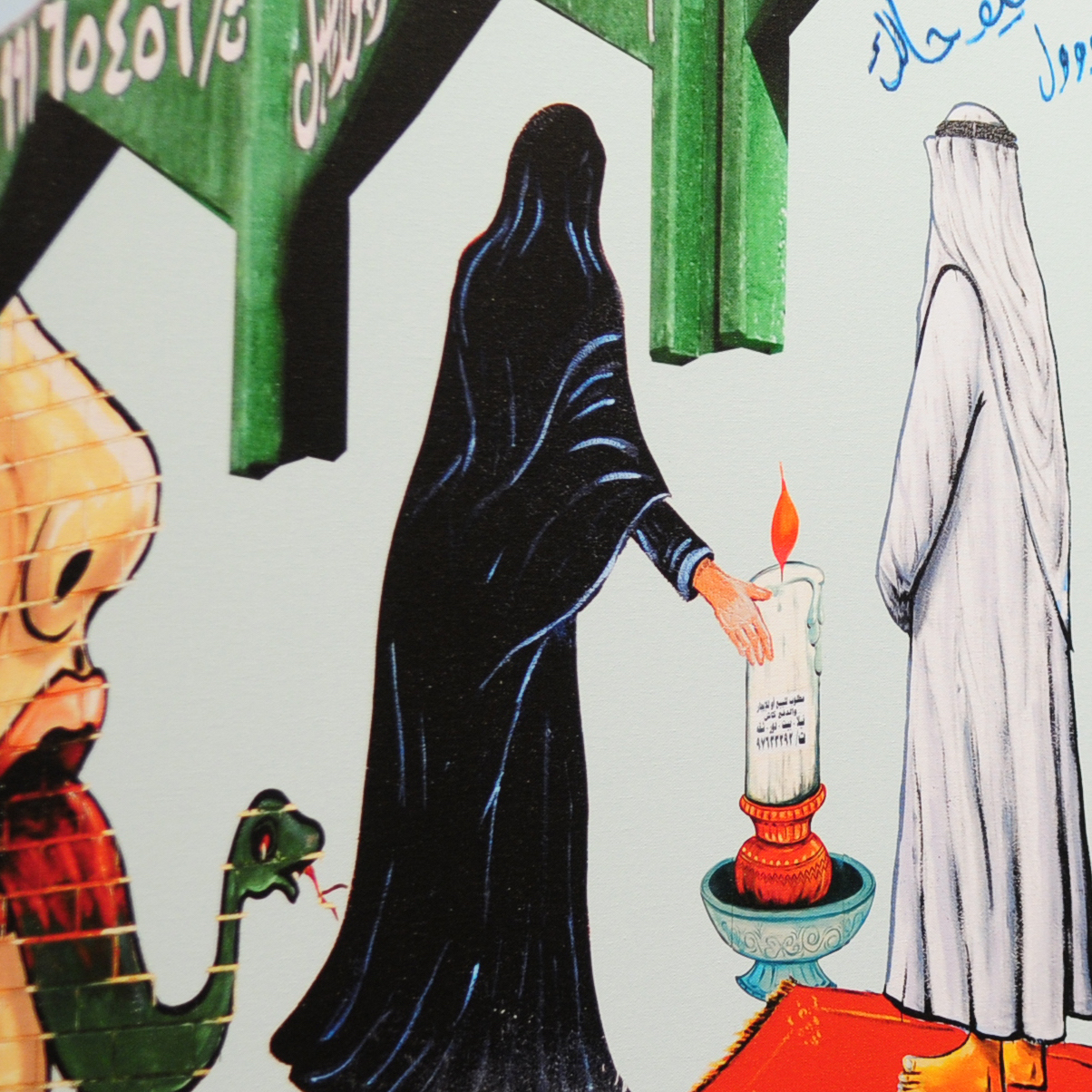Public art, postmodernism, and ‘Wahhabi Cubism’ come together in the work of Al Qadiri
Kuwaiti artist Monira Al Qadiri is a maverick. Though the word doesn’t do her justice, her humble ways and eclectic work speak volumes. Adventurous with her subjects, Monira is never afraid to explore new terrain. Most days, her art finds itself positioned well outside any self-imposed confines; on others, it morphs itself along with these confines, transforming into something totally unique. The daughter of an artist, Monira has shown time and time again that art runs in her veins. Schooled in Japan since the age of 16, she has soaked up her surroundings in Tokyo over the years to become the idiosyncratic talent she is today.
After having been asked to participate in Sultan Gallery’s 50/20 exhibition in 2011, which celebrated 50 years of independence and the 20th anniversary of the liberation of Kuwait, Monira began looking around the city for inspiration. After hours of driving around Kuwait, the artist spotted what looked like painted murals on power generators, which she thought of as ‘naïve’ in terms of their style; nonetheless, these generators captured the artist’s attention, and transported her into a world of ‘state-sanctioned religious art’, as she describes it. With their Art Brut-like quality, what drew her to the murals in particular was the medium through which they were displayed. Were these murals sponsored by the state, or some sort of religious foundation? Such was the question the artist posed to herself as she began taking picture after picture of the generator murals.
What, exactly, the art was portraying was an entirely different issue. Being of a conspicuously Islamic nature, the messages they were trying to convey - alongside bizarre-looking figures - weren’t naïve in the slightest, but rather revolved around issues of morality and piousness. What intrigued Monira even more was how relevant and specific to Kuwait the paintings were. From the use of pearls in making statements to the depiction of the Kuwaiti national dress on the figures, the artist was lured in closer and closer. ‘The further you drive [out] in the city, the more experimental it gets’, she remarked, smiling. The ‘absurdity’ of it all excited her; the terrifying text accompanying the illustrations, the pastel hues, and the bright, bold colouring.

A muhawwil in Kuwait
As the project slowly turned into a scavenger hunt, and having over a hundred images at her disposal, the artist set to work. Monira’s first thought was to present the paintings in an animated film; however, upon further reflection, she felt the images were too ‘flat’, and wouldn’t do the murals justice presented as a film. ‘It would work as a wall, not as a film’, she eventually decided. It was here that here that the idea emerged to create some kind of structure resembling the shape and form of an electric power generator, with an animated video projected onto it.
Monira looks at her Muhawwil as a form of ‘Wahhabi Cubism’, and her recent exhibition as revolving around the idea of an ‘atmospheric Islam’ and the ‘extremities of the Salafi imagination’
In order to realise this relatively expensive idea, Monira applied for a grant from AFAC (the Arab Fund for Arts and Culture), which later provided her with financial support. Upon receiving the grant, she began conducting research and embarked on the painstaking process of drawing, painting, and hanging each illustration on her wall. In order to visualise what the animation would look like in its finished form, she used a lightbox to view the movements of the hand-painted illustrations and alter them accordingly. Once her studio was covered wall-to-wall with the illustrations, and she felt she had achieved the desired effect, it only took Monira a few weeks to put the various segments together to produce her installation. With the support of the gallery and the architectural supervision of Atelier Aziz Al Qatami, Monira’s ‘wall’ structures were finally completed after an arduous construction.

In its final form, the structure was a giant generator – a muhawwil – with semi-translucent screens acting as walls. As an homage to the artist’s favourite generator, the structure was painted with the same shade of green. The project was the most technically challenging one Monira had undertaken to date, and until the last moment, she was skeptical that everything would fall into place; but, surely enough, her muhawwil – which was again exhibited as part of a solo exhibition at Sultan Gallery this January – became a reality. Surreal, bizarre, and fantastical, the use of semi-translucent walls meant that whatever was projected onto one wall would be faintly visible through the others, giving viewers a dream-like experience. As well, music from the Moa’thirat Islamiya (Islamic Emotions) genre, and the Ah’at Islamiya (Islamic Sighs) and Ah’at Hazeena (Melancholic Sighs) subgenres was played ‘against’ the installation, giving it a religious undertone. Merging religion with local Kuwaiti culture further grounded Monira’s project in the context surrounding it; and, by breathing life into the murals through their animation, a dialogue was sparked with the religious charities that had initially commissioned the murals. In a way, Muhawwil is the artist’s way of representing Islam through art, in order to understand and appreciate the mentality of a religious group. ‘This is not a criticism,’ she explained, ‘this is more of a reflection on society’.
What Monira realised and strived to recreate in her own muhawwil was the fact that the main ‘core’ of the generators carried the messages; the remaining walls on her structure only featured inanimate (yet culturally significant) imagery on them. The images originally sprang from a desire to advertise morality; yet, those that pass by them in Kuwait merely glance at them, relegating the messages to a sort of subliminal territory. In recreating these murals – a process highly enjoyable for the artist, which caused her to ponder on the origin and concept of these age-old illustrations – Monira was only able to use a few of the images she collected. As well, at first glance, audiences assumed that she had produced this ‘simple’ art herself, not realising that the images she used were ‘not just in a gallery, but all over the city’, as the artist stated.
The fact that the controversial group of people critical of Monira’s work is the same as the one commissioning such murals around Kuwait is a source of fascination for the artist. Religious extremists in Kuwait are known for denouncing the depiction of human figures, and as a result, have portrayed the individuals in their murals with imaginatively concealed faces. Recently, Monira has also taken note of the fact that such murals are disappearing, and are being painted over by the authorities. One can only speculate that such ‘art’ is no longer welcomed by the state, especially as it has begun to crack down on various religious organisations.
Monira looks at her Muhawwil as a form of ‘Wahhabi Cubism’, and her recent exhibition as revolving around the idea of an ‘atmospheric Islam’ and the ‘extremities of the Salafi imagination’. When asked about how the project began and how it managed to come together, she simply remarked, laughing, ‘It was a beautiful coincidence for the whole thing to work out this way’. Meanwhile, in the gallery, the melancholic music played on, rising now and again with sporadic bursts of emotion, while the messages on the muhawwil continued to materialise arbitrarily.

